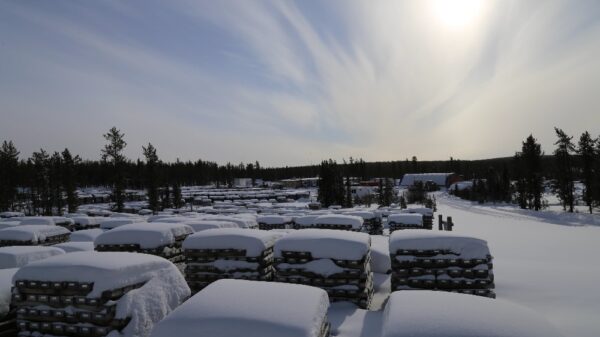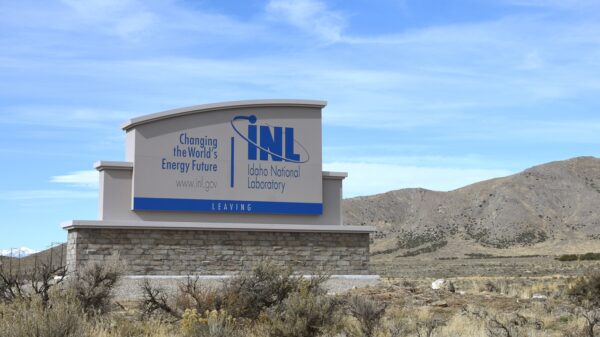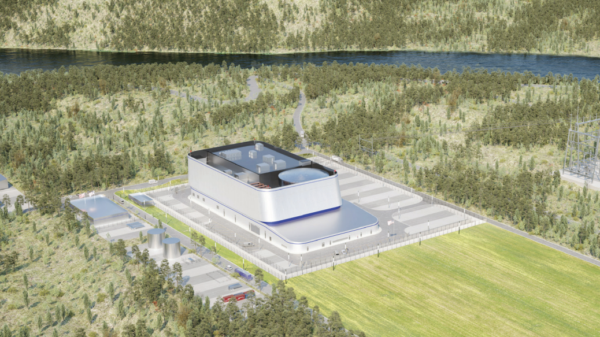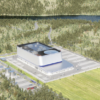Cameco Corporation (TSX: CCJ) (NYSE: CCO) and Brookfield Asset Management (NYSE: BEP) (NYSE: BEPC) (TSX: BEP.UN) subsidiary Westinghouse Electric Company signed an agreement with Community Power, Ltd (CNP) to deploy the United Kingdom’s first privately-financed small modular reactor (SMR) fleet.
Announced last week, the fleet will use Westinghouse’s AP300 SMR and commercial operation is anticipated by the early 2030’s.
CNP is building four AP300 SMRs in the North Teesside region of Northeast England as part of an agreement.
The region’s significant industrial and economic development is driving increased demand for carbon-free, reliable electricity. CNP, along with strategic partners like Jacobs and Interpath Advisory, is actively developing a fully licensed site for the project, aiming for completion by 2027.
Additionally, the privately funded project aligns with the UK Government’s recently published consultation on Alternative Routes to Market for New Nuclear Projects and complements Westinghouse’s involvement in Great British Nuclear’s (GBN) SMR technology selection process.
This collaboration aims to further expand the scale for workforce, training, and localizing the supply chain through multiple deployment projects.
“This project brings together Westinghouse’s proven technology and mature supply chain with our depth of expertise in nuclear programme delivery, in a region that is transforming its industrial landscape,” said Paul Foster, Community Nuclear Power’s CEO.
In May 2023, Westinghouse launched the AP300 small modular reactor, which is the only SMR based on AP1000, which is an advanced, large Generation III+ reactor already in operation globally.
Read more: ATHA enters C$8M option agreement with Inspiration Energy for Saskatchewan assets
Read more: ATHA completes 92 Energy acquisition; prepares for drill program at Gemini project in Q3
Westinghouse helps Ukraine with first ever AP1000 reactor
Westinghouse and the Ukrainian state-owned utility Energoatom initiated construction on the first AP1000 reactor in Western Ukraine in April. This marked a significant step in the U.S. effort to steer countries away from Russian nuclear dependencies. The region currently relies on Soviet-era VVER (water-water energetic reactor) models for its existing reactors.
The geopolitics in the region go even deeper as the United States Senate recently passed a bill banning the import of low-enriched uranium (LEU) from Russia. Additionally, the bill prohibits the import of unirradiated low-enriched uranium LEU obtained through exchanges for prohibited uranium or received in a manner intended to bypass the restrictions outlined in the ban, according to summary information from the U.S. Senate.
However, the Department of Energy (DOE) can waive this prohibition if it determines that there is no viable alternative source of LEU available, and if it is necessary to sustain a nuclear reactor in the U.S. or of a U.S. nuclear energy company. This waiver permits the import of a limited amount of uranium.
That means that the United States will need to rely on its existing alternative sources of uranium supply even more to make up the shortfall, especially as the prospects behind next generation reactors like SMRs aren’t due for another decade. Additionally, companies like Cameco, NexGen Energy (TSX: NXE) (NYSE: NXE) (ASX: NXG) and ATHA Energy Corp (TSXV: SASK) (FRA: X5U) (OTCQB: SASKF) in Saskatchewan could be called upon to meet the demand in the near future.
ATHA Energy Corp. is a sponsor of Mugglehead news coverage














